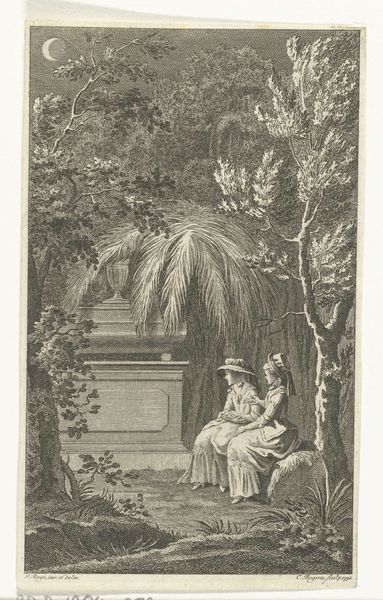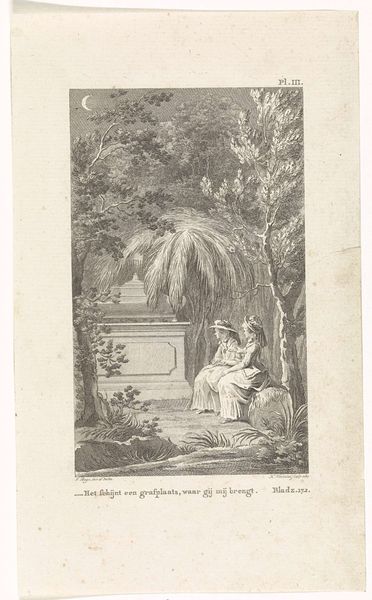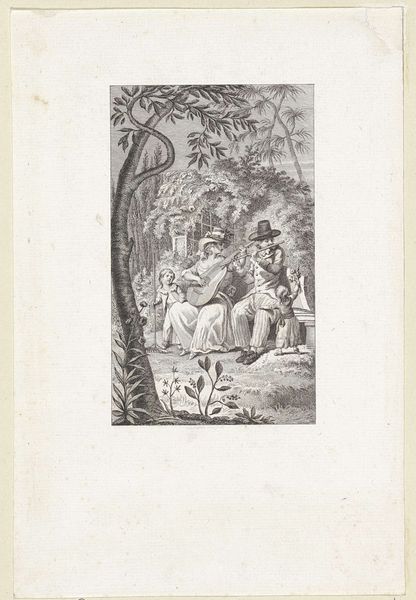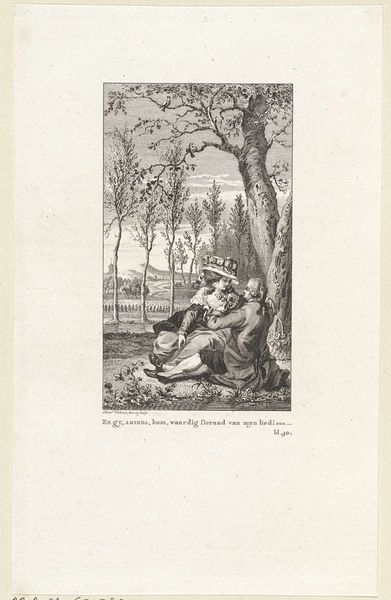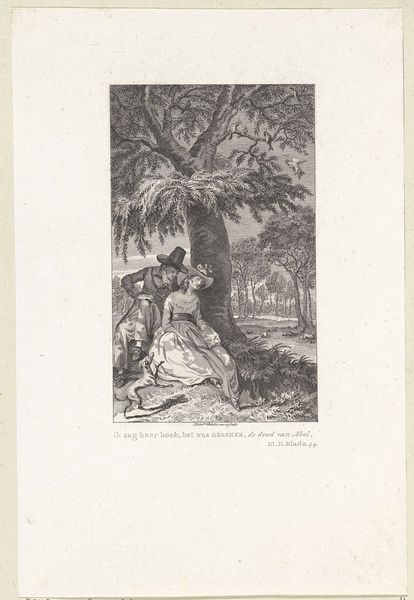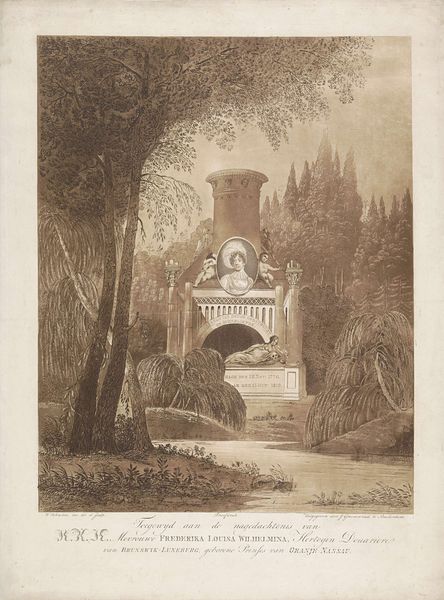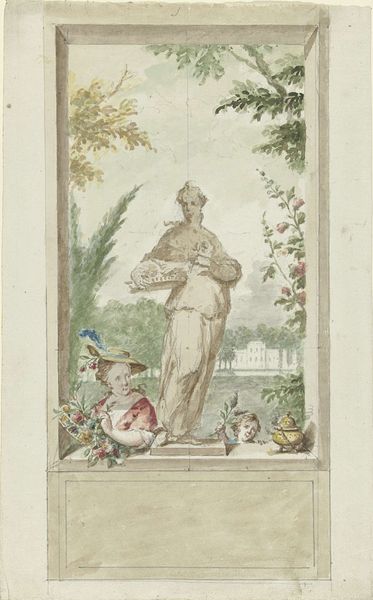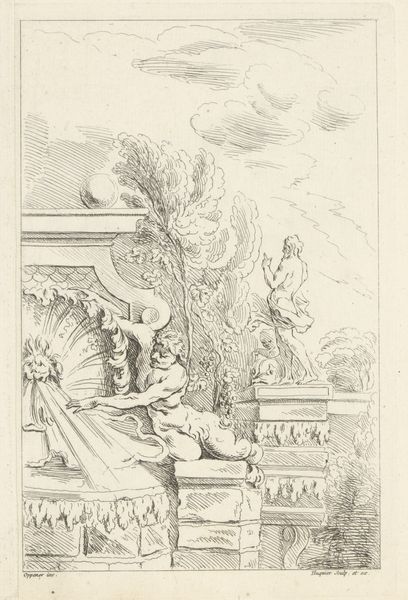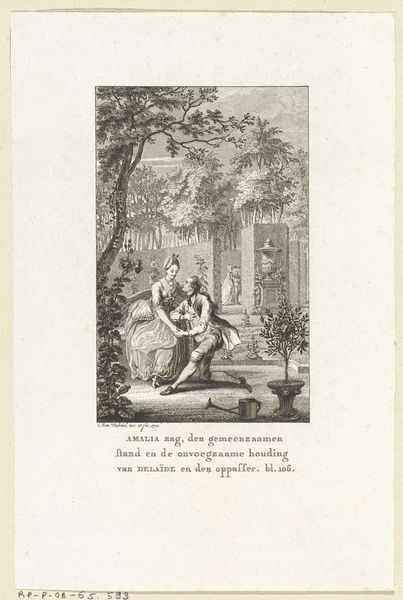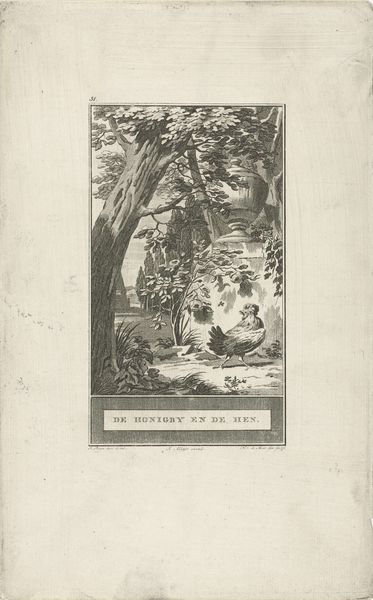
Dimensions: height 144 mm, width 87 mm
Copyright: Rijks Museum: Open Domain
Curator: This pen and ink drawing is entitled "Twee dames zittend bij een graftombe," which translates to "Two Ladies Seated by a Tomb," attributed to Jacobus Buys and created sometime between 1734 and 1801. It's part of the Rijksmuseum collection. Editor: It whispers secrets, doesn't it? So quiet and reflective. Those women, all in gentle monochrome, sitting near that grand tomb—they could be figments of a dream under that sliver of moon. Curator: Absolutely. Let's consider the production. The delicate hatching and cross-hatching indicate a meticulous approach to creating depth and shadow with only pen, ink, and paper. The artist utilizes the tonal possibilities of ink to imitate paint. This was a popular technique, enabling broader participation in the image-making industry by skilled, but often unacknowledged, printmakers, and draughtsmen. Editor: Imagine being the artist, Jacobus, hunched over his table with quill in hand... Did he know the stories of these ladies? Did he see them in the local park like that, pausing, reflecting? There’s something about the composition – the women are smaller in relation to the monument and landscape – giving us a sense of transience against lasting stone. Curator: That transience points toward the burgeoning Romantic movement in the late 18th century, with its emphasis on emotion, individualism, and the sublime in nature and mortality. Note also the picturesque qualities that this and other similar pen illustrations satisfied. The artist could market these attractive vignettes directly, and entrepreneurs copied and resold such pictures throughout Europe. Editor: But do you think that even with this cottage industry, as it were, Jacobus poured some real grief into this piece? Or wonder? Did they know loss like anyone? Maybe that’s projecting, but the gentle sway of the trees, even the shadows… It all just feels weighty, almost mournful. I feel drawn into their quiet meditation. Curator: You know, when looking at this through a material lens, I start to wonder about the economy of grief, the commodification of mourning that these Romantic images engendered through distribution, patronage and collecting, especially as the public sphere allowed greater engagement and sentimentality through viewing experiences and domestic art hanging. Editor: "The economy of grief"... What a thought! So, here they are, caught in time, available for anyone to gaze upon. That is fascinating. It reminds me to respect these women's silence and that even Jacobus' intent will forever remain, well, entombed. Curator: Exactly, we must consider it alongside economic and social factors related to art production, collection, and reception in the eighteenth century. The convergence creates further conversation about intention, access and experience.
Comments
No comments
Be the first to comment and join the conversation on the ultimate creative platform.
